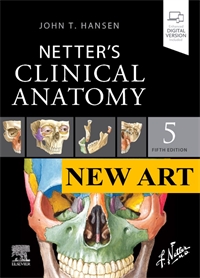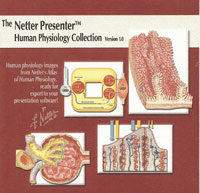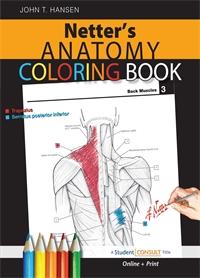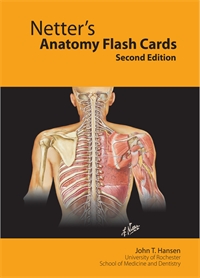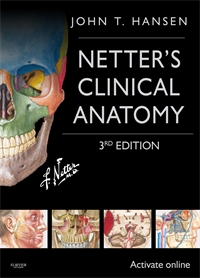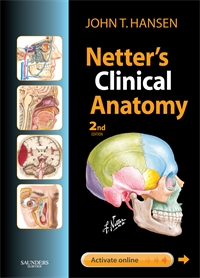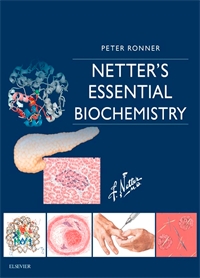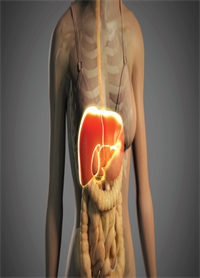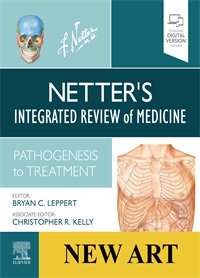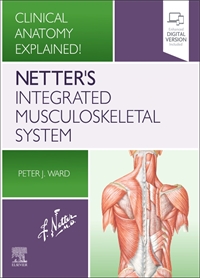Elsevier's Integrated Biochemistry
Author: John W. Pelley PhD
ISBN: 9780323034104
- Page 1: Hydrogen Bonding
- Page 3: PH to Proton Concentration
- Page 3: Titration Curve
- Page 4: Titration Curve for Alanine
- Page 5: Ionization States of Alanine
- Page 7: General Structure of Amino Acids
- Page 9: Equilibrium Between Cysteine and Cystine
- Page 9: Open-chain Structures for Carbohydrates
- Page 10: Cyclic Structures for Common Carbohydrates
- Page 10: Mutarotation of Glucose
- Page 10: Formation of an Acetal
- Page 11: Nutritionally Important Disaccharides
- Page 11: Polysaccharide Structure
- Page 12: Formation of Glucuronic Acid and Gluconic Acid By Oxidation of Glucose
- Page 12: Structures of N-acetylglucosamine
- Page 13: Numbering of Fatty Acid Carbons
- Page 14: Cis Vs. Trans Configuration of a Double Bond and Linoleic Acid
- Page 14: Formation of Micelle By Fatty Acids
- Page 15: Relationship of Base and Phosphate to Ribose In General Nucleotide Structure
- Page 15: DNA and RNA
- Page 16: Deoxynucleoside Structures
- Page 16: Ribose-phosphate Backbone
- Page 16: Standard Watson-Crick Base-pairing
- Page 17: Cross-section of DNA
- Page 17: Stem-loop Structure In RNA
- Page 18: Melting Curves for DNA
- Page 20: The Peptide Bond Linking α-carbons
- Page 20: Polarity In a Polypeptide
- Page 20: Secondary Structure Includes α-helix and β-pleated Sheet (β-sheet)
- Page 21: Tertiary Structure of Myoglobin and β-globin
- Page 22: Quaternary Structure of Hemoglobin
- Page 23: Polypeptide Sequence
- Page 24: Protein Purification By Dialysis
- Page 24: Migration of Protein Samples On Electrophoresis
- Page 26: Structure of Heme
- Page 26: Equilibrium Between the Tense (T) and Relaxed (R) Forms of Hemoglobin
- Page 26: O2-Binding Curve for Hemoglobin and Myoglobin
- Page 27: Formation of Linear Aggregates Between Molecules of Sickle Cell Hemoglobin
- Page 30: Free Energy Change
- Page 31: Induced Fit (that Is, Change From Open Form to Closed Form) During Binding of Substrate to the Enzyme
- Page 32: Substrate Vs. Velocity Curve
- Page 33: Equilibrium Between a Competitive Inhibitor and an Enzyme
- Page 33: Structure for Methotrexate and Tetrahydrofolate
- Page 34: Lineweaver-Burke Double Reciprocal Plot
- Page 34: Equilibrium Between a Noncompetitive Inhibitor and an Enzyme
- Page 34: Lineweaver-Burke Double Reciprocal Plot
- Page 35: Regulation By Covalent Modification
- Page 35: Cascade Mechanism for Hormonal Control of Enzyme Activity
- Page 35: Sigmoid Substrate Vs. Velocity Plot
- Page 38: Membrane Components
- Page 39: Comparison of Carrier-mediated Transport With Passive Diffusion
- Page 39: Uniport Vs. Cotransport
- Page 40: Sodium-dependent Glucose Transporter
- Page 40: Chloride-bicarbonate Transporter
- Page 41: Synthesis and Degradation of CAMP
- Page 42: Activation of Protein Kinase A By CAMP
- Page 43: Epinephrine Receptor Activation of Gs Protein
- Page 44: Activation of Phospholipase C and the Phosphoinositide Cascade
- Page 45: Insulin Receptor With Ras-dependent and Ras-independent Pathways
- Page 48: Glycolytic Pathway Reactions
- Page 48: Sequence of Reactions for the Pyruvate Dehydrogenase Multienzyme Complex
- Page 49: Regulated Reactions In Glycolysis
- Page 49: Regulation of PFK-1 By Fructose 2,6-Bisphosphate
- Page 49: Regulation of the Pyruvate Dehydrogenase Complex
- Page 50: Formation of Lactic Acid From NADH Produced In Glycolysis
- Page 51: Intersection of Glycolysis and Pyruvate Dehydrogenase Reactions With Other Major Metabolic Pathways
- Page 55: Steps In the Citric Acid Cycle Pathway
- Page 56: Steps In the Electron Transport Chain
- Page 57: Structure of Coenzyme Q
- Page 58: Regulated Reactions In the Citric Acid Cycle
- Page 58: Anaplerosis
- Page 59: Iron-sulfur Bonding In Iron-sulfur Proteins
- Page 60: Intersection of the Citric Acid Cycle
- Page 61: Shuttle Mechanisms for Cytoplasmic NADH
- Page 62: Inhibitors of ATP Synthesis
- Page 65: The Gluconeogenic Pathway
- Page 67: Reciprocal Regulation of Glycolysis and Gluconeogenesis
- Page 67: Regulation of Pyruvate Carboxylase
- Page 68: Interface of Gluconeogenesis
- Page 69: Glycogen Synthesis
- Page 69: Regulation of Glycogen Metabolism
- Page 70: Cascade Activation of Glycogen Phosphorylase
- Page 74: Pentose Phosphate Pathway
- Page 74: Role of NADPH
- Page 74: Exclusive Production of Ribose
- Page 74: Balanced Production of NADPH and Ribose
- Page 76: The Galactose Pathway
- Page 76: Conversion of Galactose to Galactitol
- Page 77: Fructose Pathway
- Page 80: Metabolic Steps In the Synthesis of Fatty Acids
- Page 81: Elongation of Fatty Acid Chain
- Page 81: Assembly of a Triglyceride
- Page 82: Regulation of Acetyl-CoA Carboxylase
- Page 83: Transport of Acyl-CoA By the Carnitine Cycle
- Page 83: β Oxidation of Fatty Acids
- Page 84: Activation of Hormone-sensitive Lipases
- Page 85: Conversion of Propionyl-CoA
- Page 88: Structure of Major Classes of Steroids
- Page 88: Synthesis of Mevalonic Acid
- Page 88: Comparison of Cytoplasmic and Mitochondrial HMG-CoA Synthase
- Page 89: Conversion of Mevalonate to Isoprenoids
- Page 89: Synthesis of Squalene From Isoprenoid Precursors
- Page 89: Synthesis of Cholesterol From Squalene
- Page 90: Pregnenolone As a Precursor for the Adrenal Cortical Steroids
- Page 91: Synthesis of the Adrenocortical Steroids
- Page 92: Synthesis of the Phosphatidyl Alcohols
- Page 92: Page 92
- Page 92: Salvage of Choline and Ethanolamine
- Page 92: Comparison of Plasmalogen and Phosphoglyceride Structures
- Page 93: Action of Phospholipases
- Page 93: Structure of a Ceramide
- Page 93: Overview of Pathways for Sphingolipid Synthesis
- Page 94: Structure of 3'-Phosphoadenosine-5'phosphosulfate (PAPS)
- Page 94: Formation of ABO Blood Group Antigens
- Page 94: Enzyme Deficiencies
- Page 95: Overview of Eicosanoid Pathways
- Page 95: Prostaglandin, Thromboxane and Leukotriene Synthesis
- Page 97: Carbohydrate–amino Acid Pairs
- Page 98: Overview of Ammonia and Urea Production From Amino Acid N2
- Page 98: Aspartate Aminotransferase (AST) and Alanine Aminotransferase (ALT)
- Page 98: Glutamate Dehydrogenase (GDH) Reaction
- Page 99: Urea Cycle
- Page 100: Metabolic Intermediates Formed From Amino Acid Degradation
- Page 100: Interconversion of Serine and Glycine
- Page 100: Interconversion of Glutamate / Glutamine and Aspartate / Asparagine
- Page 101: Formation of FIGLU In Histidine Metabolism
- Page 101: Activated Methyl Cycle and the Degradation of Methionine
- Page 103: Synthesis of Catecholamines, DOPA, and Melanin From Phenylalanine and Tyrosine. BH2, Dihydrobiopterin; BH4, Tetrahydrobiopterin
- Page 103: Conversion of Tryptophan to Serotonin and Melatonin
- Page 103: Structure of Heme
- Page 104: Biosynthesis of Heme
- Page 104: Degradation of Heme
- Page 105: Conversion of Phenylalanine and Tyrosine
- Page 108: Treatment of Hyperammonemia
- Page 109: Metabolic Effects of Insulin In Liver, Adipose, and Muscle Tissue
- Page 109: Metabolic Effects of Glucagon In Liver, Adipose, and Muscle Tissue
- Page 110: Metabolic Effects of Epinephrine In Liver, Adipose, and Muscle Tissue
- Page 110: Metabolic Effects of Glucocorticoids
- Page 112: Liver, Adipose, and Muscle Metabolism
- Page 113: Liver, Adipose, and Muscle Metabolism
- Page 114: Alanine Cycle
- Page 115: Liver, Adipose, and Muscle Metabolism
- Page 117: Liver, Adipose, and Muscle Metabolism
- Page 118: Formation of IMP From Amino Acids
- Page 118: Cross Regulation of the Synthesis of AMP and GMP
- Page 119: Purine Salvage Pathway
- Page 119: Purine Degradation to Uric Acid
- Page 120: Formation of Carbamoyl Aspartate
- Page 120: Formation of Pyrimidine Nucleotides
- Page 121: Ribonucleotide Reductase Reaction
- Page 124: DNA Into Chromatin
- Page 125: Cell Cycle In Eukaryotic Cells
- Page 126: Comparison of Prokaryotic
- Page 127: Helicase Action at the Replication Fork
- Page 127: Helicase and Topoisomerase Action
- Page 127: Action of DNA Polymerase
- Page 128: Replication Dilemma
- Page 129: Synthesis In Prokaryotic Cells
- Page 129: Base Pair Mismatches During DNA Synthesis
- Page 130: Proofreading By DNA
- Page 131: Mismatch Repair
- Page 132: Base Excision Repair
- Page 132: Formation of Thymine Dimers
- Page 133: Nucleotide Excision Repair
- Page 133: Methylation of Guanine
- Page 133: Direct Repair of Guanine
- Page 136: Structure of Yeast Alanine Transfer RNA
- Page 137: Components of a Prokaryotic Gene
- Page 137: Prokaryotic Promoter Site
- Page 137: RNA Polymerase
- Page 138: Polymerization
- Page 138: Direction of MRNA Synthesis
- Page 138: Formation of Hairpin Structure
- Page 139: Eukaryotic Gene
- Page 139: Eukaryotic Promoter
- Page 140: Primary RNA Transcript
- Page 140: Formation of Lariat Structures
- Page 140: Formation of a Spliceosome
- Page 141: Expression of the Lac Operon
- Page 142: Interaction of Transcription Factors
- Page 143: Interaction of Activated Enhancer
- Page 144: MyoD1 Master Regulatory Gene
- Page 144: Alternative Splicing and Alternative Tailing
- Page 148: Charging of TRNA
- Page 149: Conversion of Cysteinyl TRNA
- Page 149: Proofreading By Isoleucyl -tRNA Synthetase
- Page 149: Wobble Position In the Anticodon
- Page 150: Base Pairing Between Inosine
- Page 150: Effects of Base Change Mutation Range
- Page 151: Effect of Frameshift Mutations
- Page 151: Normal Vs. Nonaligned Recombination Between Chromosomes
- Page 152: Formation of a Lepore Hemoglobin Gene
- Page 152: Page 152
- Page 153: Overview of Initiation, Elongation, and Termination of Translation
- Page 154: Regeneration of Prokaryotic Tu-GTP Complex
- Page 154: Prokaryotic Polypeptide Chain Initiation
- Page 155: Polyribosomes
- Page 156: Targeting of a Polypeptide
- Page 157: Formation of Mannose 6-Phosphate
- Page 157: Negative Control of Ferritin MRNA Translation
- Page 159: Palindromic Restriction Sites
- Page 160: Treatment Target DNA
- Page 161: Preparation of CDNA From MRNA
- Page 161: Preparation of Genomic DNA
- Page 161: Structure of a Plasmid
- Page 162: Structure of a γ Bacteriophage Vector
- Page 162: Components of a Yeast Artificial Chromosome
- Page 163: Overview of Cloning Procedure
- Page 163: Identification of a Clone Carrying the Target DNA
- Page 164: Polymerase Chain Reaction
- Page 165: Determination of a Restriction Map By Gel Electrophoresis
- Page 165: Comparison of Blotting Procedures for Nucleic Acids and Proteins
- Page 166: RFLP Analysis of Sickle Cell Hemoglobin
- Page 166: Polymorphism
- Page 167: Comparison of DNA
- Page 170: Amylose and Amylopectin
- Page 171: Digestion and Absorption of Dietary Lipids
- Page 174: Visual Cycle In the Retina
- Page 175: Formation of Calcitriol
- Page 177: Storage of Ferritin
- Page 179: Actin and Myosin Components of a Sarcomere
- Page 180: Tropomyosin and Troponin
- Page 180: Power Stroke Involves a Change In the Orientation
- Page 181: Contribution of Creatine Kinase
- Page 182: Collagen Structure
- Page 182: Formation of Hydroxyproline
- Page 182: Type I Collagen
- Page 183: Synthesis and Assembly of the Collagen Fiber
- Page 184: Formation of Desmosine
- Page 185: Structure of Fibrinogen
- Page 186: Thrombin Digests Away the Fibrinopeptides
- Page 186: Transglutaminase
- Page 187: Blood Clotting Cascade
- Page 188: Transport of Dietary Lipids Via Chylomicrons
- Page 189: Interactions of VLDL, LDL, and HDL
- Page 190: Conversion of Benzpyrene to Benzpyrene Epoxide
- Page 190: Conversion of Salicylic Acid
- Page 190: Production of Acetyl -CoA From Ethanol
- Page 190: Shunting of Pyruvate to Lactate


